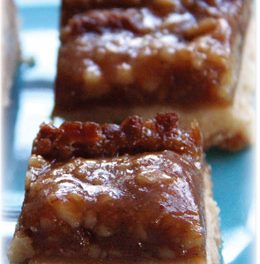
Back in the fifties, my grandparents bought a tiny beach cottage on the Cape in Yarmouth. That summer, and for many summers to follow, my Grandfather and my mom (young teen at the time) navigated the mudflats and eel-filled shallows to reach the sandbars. There, twice a week with Gramps in his waders, they would begin their day’s work, digging for sweet, briny treasure: soft shelled-clams, or “steamers.” Most days, by the time the tide had begun to creep in, they had filled their 10-quart basket and were heading home for a feast. What a magical childhood summer tradition!
A teacher by nature and trade, my grandfather spent endless hours with my mom, pointing out the telltale holes that indicate a clam below the surface. He taught her how to gently dig and feel for the clam, so as not to damage the animal’s soft shell. And she learned how to use a shellfish gauge, measuring the creatures to determine if they were large enough to take home and how to properly replant them if they weren’t.

Clamming as a tradition has survived many years in our family; it remains an institution and we have my mom to thank for keeping the tradition alive. My actual indoctrination did not come until I was 18 when my parents bought a second home in Harwich (my grandparents’ cottage long since rented). My parents began digging immediately and soon my mother taught all of us how to dig. She passed along the knowledge my grandfather had imparted to her: how to spot the holes, techniques for gently easing the clams out of the sand, and were the sweetest clams tend to reside.
We’ve always been big on science in our family, and this is a perfect activity to combine learning and fun. When my kids were young, they loved clamming because it was something to do on the beach. It was like finding a bunch of buried treasures. As they have grown, they have really come to love the science of it. Through hands-on learning with their grandmother, and talking with the Harbormaster, the kids have become very educated. They ask questions and really retain the knowledge because they have a tangible way to understand (using their hands to learn!). Gaining an appreciation for how hard it is to work for your food, the kids are more apt to try something if they’ve had a part in its collection.
In recent years, the kids have taken it upon themselves to become the unofficial ambassadors of our little place and customs; talking to folks about the importance of filling in your holes when done, using the measuring gauge, and offering pointers and tips on the best spots to dig on the beach. What they are really doing is sharing their excitement and love for the multi-generational family tradition of spending a few hours on the beach digging for your dinner—a tradition that will be carried on for generations.
Most seaside towns offer shellfish licenses and typically there are resident and non-resident rates, and specific days and locations where clamming are permitted. A visit to the local Harbormaster will get you started. Baskets and gauges can be found in places such as Ocean State Job Lot or Benny’s. Most often, the basket comes with the gauge. You’ll also need your digging implement of choice. Some folks use a shovel, we use a spoon, and some go for it with just their hands. Do not use quahog rakes when digging for soft shells as a steamer’s shell is much too fragile to withstand the rake. And the key part of clamming: one can only dig at low tide. We like to get there 1-2 hours prior to low tide, leaving a lot of time to dig.
On any given Wednesday or Saturday summer afternoon you can find our family at our favorite spot, hunched over the tiny holes, spoon in hand (mom’s very own digging technique!), digging and pulling and filling our basket. The kids take turns measuring, rinsing, and taking extra care to replant the baby clams (neck side up), for those are the ones we will dig next year. Tradition, memories, and adventure; clamming epitomize those three words and they have become our family mantra. For countless days I’ve sat on the beach, soaking in the kids’ laughter and their exchanges with my mother, and I have been filled with a wave of gratitude for my grandfather. Lucky? Yes! With four generations of clamming, we are beyond lucky.

Steamers Recipe here
The best part of digging steamers is eating them!
After a day in the sun and hands in the sand, there is nothing better than sitting down to eat the fruits of your labor. Enjoy the sweet, salty taste of the sea…and make sure to dip them in butter!
Cleaning and Storage
Rinse clams to remove any exterior dirt and debris.
If not cooking immediately, store rinsed clams under a damp towel in an open container in the refrigerator for up to three days.
If clams are suspected of sandiness, before cooking soak them for 20 minutes to an hour in a tub of cool water with a sprinkle of cornmeal and one tablespoon salt per gallon of water. Drain and rinse.
Words and photos by Jessica Bradley who can be found on Cape Cod all summer long; clamming and catching crabs with her kids, throwing sticks for her dogs, and gratefully breathing in the salt air.






